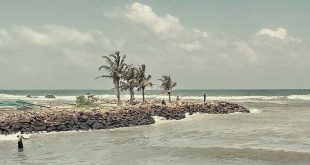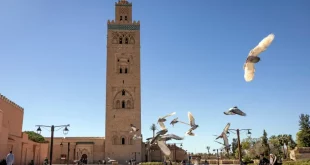Muslims least exclusive community in Sri Lanka
Race is a touchy issue almost everywhere in the world but nowhere is this more pronounced than in countries where there is a plurality of peoples. People become more race conscious when another group of people differing in physical features, language, culture and religion live in their midst. The greater the difference, the greater the distance. But there is one little thing that people often miss out on, which is that all races can freely interbreed with one another. This, needless to say, points only to one fact, that all humans have a common origin. From the Darkest African to the Fairest European or the Red Indian from a continent discovered a little over 500 years ago, all men are one. The Biblical story of Adam and Eve after all does seem to have a factual basis.
The latest genetic studies done on Sri Lankan populations have overturned some popular misconceptions with regard to race exclusiveness. For one thing, it has shown that the country’s Muslims known as the Moors, are the least exclusive of the peoples studied. On the other end of the spectrum are the Veddahs, who, despite some intermarriage with neighbouring Sinhalese have managed to preserve much of their original gene pool that goes back to the island’s Stone Age.
The study Development of Databases for Autosomal, Y-Chromosomal and Mitochondrial DNA Markers and their application in forensic casework and population genetics in Sri Lankan Populations by Dr. Ruwan Illeperuma took into consideration paternally inherited Y-Chromosome DNA, maternally inherited mitochondrial DNA and non-sex determined autosomal markers. It revealed some interesting facts on the peopling of Sri Lanka which both confirm and question established notions of race in the country.
Muslims least exclusive
The country’s Muslims, the Moor community have been shown to be genetically the most diverse of all communities, challenging the stereotype of the Moors being a rather exclusive people who hardly marry outside. Dr. Illeperuma found that the Muslims (Moors) possessed greater genetic diversity than the other ethnic groups studied, which would indicate that they have mixed more with others. For instance with regard to Autosomal or Chromosomal Non-Sex-inherited DNA, the Moors were shown to be the most heterozygous of the groups studied. This suggests greater gene flow into the Moor community from other communities when compared with the rest of the groups studied. This indicates that they had freely intermarried with these other groups.
Further with regard to paternally inherited Y-chromosomal DNA, the Moors were shown to possess certain male lineages that came from other communities and most closely approached those of the Sinhalese. They had the lowest number of population-specific haplotypes (Y-STR haplotypes), which indicates more sharing of male haplotypes with others than the other groups shared with each other. Furthermore, a phylogenetic analysis of male-inherited Y-chromosome haplotypes showed the Sinhalese to be closest to the Moors in male lineages when compared with the other groups.
With regard to maternally-inherited Mt DNA, the Moors shared the greatest proportion of non-unique haplotypes (HVS1) with others showing that they had been subjected to gene flow from the other groups in connection with female lineages. The Mt DNA tree indicated a clustering of Sinhalese and Moors, suggesting a close affinity when compared to the Veddahs and Sri Lankan Tamils. This suggests a greater contribution to their maternal lineages from the Sinhalese. Dr. Illeperuma however cautioned that the small number of Moors represented in the study does not permit us to be conclusive in this regard and that it is only a larger sample that could be reliably taken to be representative of the community as a whole.
What all this suggests is that the Moors have been the least exclusive of the country’s major communities, as far as the genetic evidence is concerned. That their maternally-inherited Mt DNA should closely resemble that of the Sinhalese should not come as a surprise given the historical evidence for Moor men espousing Sinhalese women. There is considerable evidence to show that the early Arabian settlers of the country intermarried with the daughters of the land. These early seafaring Muslims who arrived to trade here did not bring women with them and so married local women when they chose to settle down here.
The Moors of Akurana for instance trace their descent to three Arabian mercenaries who espoused Kandyan women during the reign of King Rajasinha II (1635-1687). The Gopala (Betge Nilame) family of Moors domiciled in Getaberiya in the Kegalle district likewise claim descent from Arab physicians who arrived in the country from Sind during the reign of King Parakramabahu II (1236-1270) of Dambadeniya and espoused Sinhalese women. Indeed, some of the members of this clan are said to have been given in marriage daughters of the Kandyan nobility. According to a surviving member of the clan who is now over 90 years old, Mohamedu Udayar of Gevilipitiya, oral tradition passed down the generations has it that their first ancestor who settled in the country took in marriage Tikiri Kumari, daughter of Unambuve Rala. This is interesting since the Govi clan of Unambuva were deemed to be of a very high status in Sinhalese society, being a clan with which even Sinhalese royalty, including the last true Sinhalese monarch, Narendra Sinha, married into. In fact, we were informed by Sheikh Mohamadu Udayar’s son, Sheikh Hamees that his father is still addressed as Nilame by elderly village folk while he too has been addressed as Punchi Nilame. The women of the clan he pointed out are likewise addressed as Menike. Titles such as these were used in the olden days only to address those of a high social standing.
However it was not only women of the higher classes of Sinhalese that the Moors espoused. E.B. Denham observed in his Ceylon at the Census of 1911: “Amongst the Moors in Colombo and Galle at the present day there must be a fairly considerable infusion of Sinhalese blood; the number of Sinhalese women married to or living with Moors is fairly large”. We even hear of a Moor who had settled in a village of the untouchable Rodi caste of the Sinhalese, sharing their life and enjoying connubium with them, if we are to believe M.D.Raghavan who observed as such in his work Handsome Beggars. The Rodiyas of Ceylon published in 1957.
What is however interesting is that their paternally-inherited Y-chromosome DNA also showed some affinity with others, especially the Sinhalese, which may perhaps best be explained on the basis that some Sinhalese males entered the Moor community by way of adoption. There exists considerable evidence to show that the Moors of a little over a century ago adopted Sinhalese boys and girls, and brought them up as Muslims G.A. Dharmaratna observed in the latter part of the 19th century, in his work Kara-Goi Contest (1890) that “the Moors add to their number poor Singhalese boys and girls who are duly received into their community”. And Paul E. Pieris could observe in the early part of the twentieth century, in his monumental work Ceylon. The Portuguese Era (1914) that the adoption of boys of other communities was “still a popular practice among the Moors”.
What all this shows is that the Moors of old do not seem to have harboured racial prejudices of any kind, unlike some who do today. It was probably in keeping with the spirit of their Islamic faith, which, like Christianity, held that all humans had a common origin – from Adam and Eve.
Extracted from the Sunday Times, 26th January.2014
 Sri lanka Muslims Web Portal Diversity and Inclusiveness
Sri lanka Muslims Web Portal Diversity and Inclusiveness




